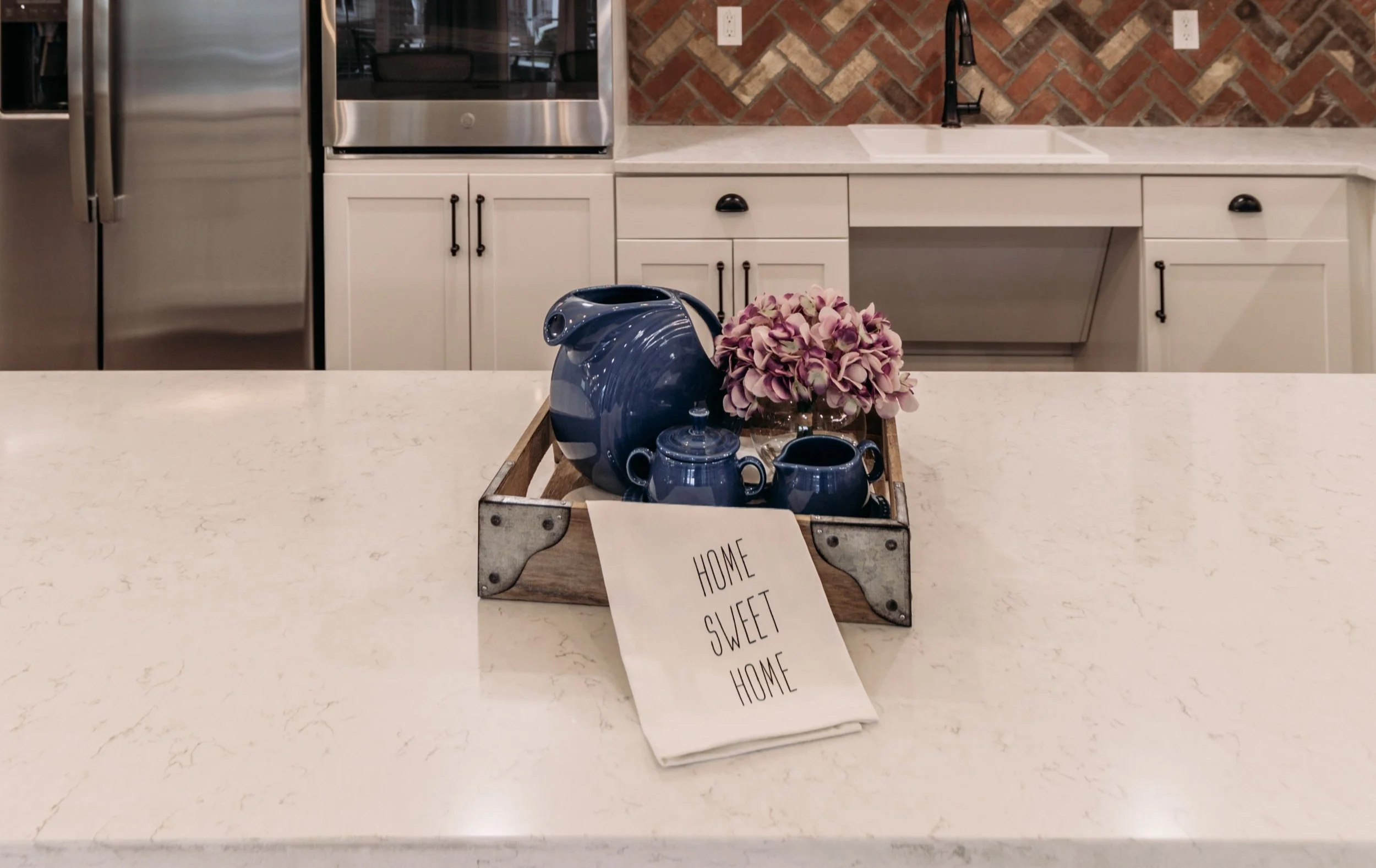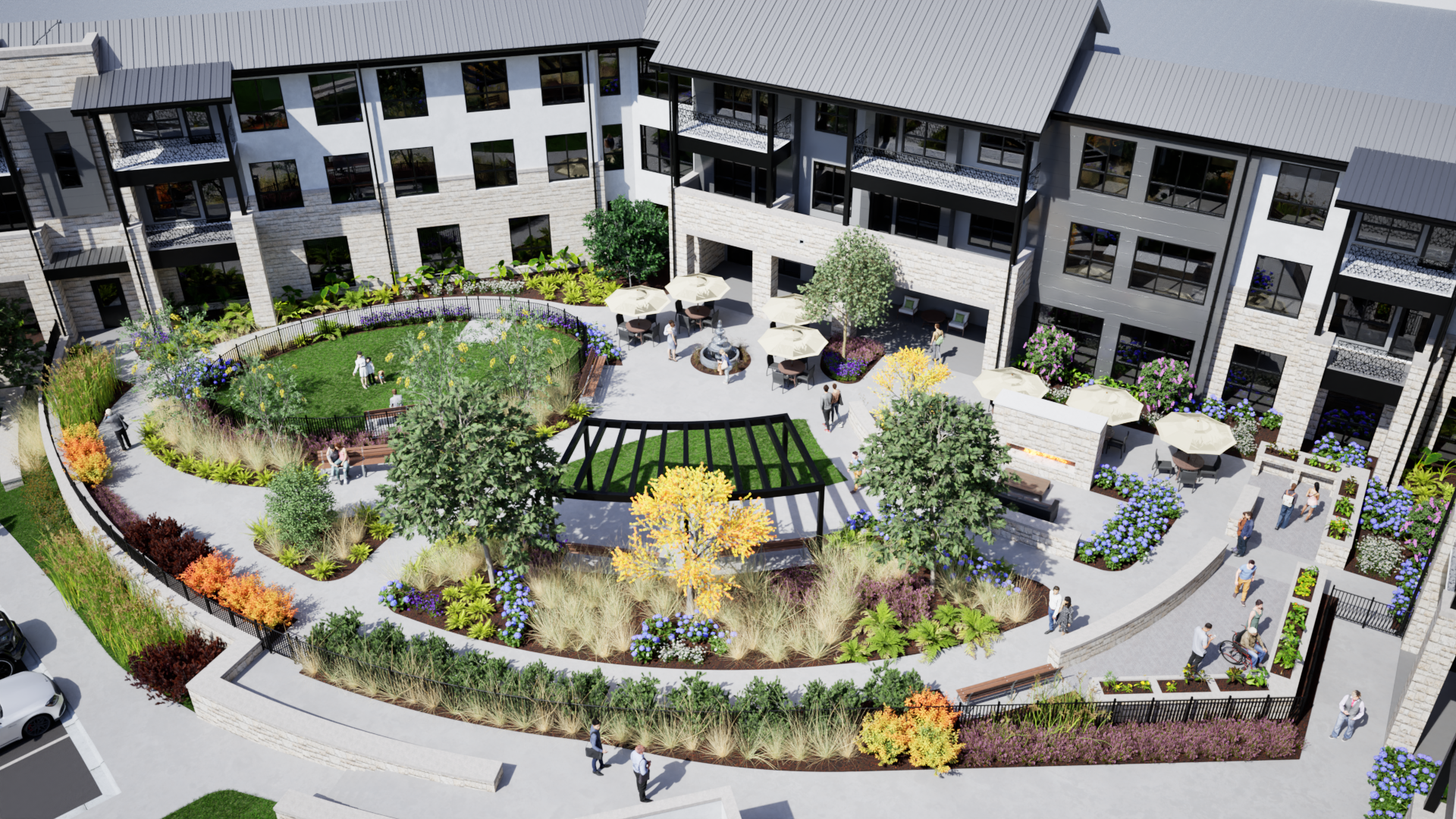Want a Great Senior Living Community? These Five Design Elements Are Key
Lots of senior living communities look good at a glance. But what does it take to have buildings and spaces that combine beauty, functionality, practicality, energy efficiency, safety, and other elements that attract and keep residents? And what amenities do we most want and appreciate?
Pi’s Greg Hunteman, Mark Warrick, and Charla Goss offered some insights on these issues and more. They shared the top five innovative design elements that make for great communities with staying power:
Tapping into the local culture and history. “We try to do this on every project – both with the exterior and interior,” said Charla. This means, she stressed, lots of research about the area, its people, and its culture. “We often hear from clients is how they love that a building feels like it belongs there when it reflects the history and architecture of the area,” said Mark. He added, “They love that the design is relatable and feels comfortable and homelike.” Of course, he emphasized that buildings can’t just be beautiful but also need to be operational and efficient; and the Pi team understands how to blend aesthetics with functionality.
Balancing modern and traditional. “Clients often are hesitant to do something modern. So we have the challenge of making sure the design doesn’t look dated but also doesn’t take them out of their comfort zone,” said Charla. Greg stressed, “We’ve found it depends on the region of the country you’re in. And we’re often trying to provide a modernized version of where the residents lived or what they would want if they bought or built today.” At the same time, he noted, “You also want a more modern design with cutting edge high-tech and other amenities that are likely more appealing to them.” Charla admitted, “We’ll often push the envelope, and our clients are happy with the results.”
Careful use of color. “Everyone loves color, but you have to be careful how you use it. It can actually date a building quickly, as color trends change over time,” said Charla. “It’s best to layer color on a neutral base or have select rooms you saturate with color.” Greg added, “You can use a bold accent piece or materials – such as exposed brick – to create color in a subtle but effective way.”
Better, more creative use of outdoor spaces. Mark said, “We’re seeing more outdoor living rooms with bars, TVs, etc. People want to use the outdoors for the same things they do inside.” Greg added, “We’re getting more requests for exterior activity and dining areas, as well as all season rooms to enjoy the outdoors. These things have received more attention during the pandemic, but I don’t think this trend will go away anytime soon.” Watch for more requests for outdoor ‘kitchens’ with similar appliances and amenities—such as cooktops, refrigeration capabilities, sinks with running water, and wet bars—along storage space for tools, equipment, cutlery, etc. At the same time, communities in cold weather climates are implementing more energy-efficient and aesthetically pleasing heat units, fire pits, and other ways to enable year-round use of outdoor spaces.
Integrating changing needs and ways of doing things. “During the pandemic, we’ve seen that seniors are more than capable of using technology; and this will impact how communities are designed,” said Charla. “We’re designing more parcel rooms than we did before, as people are having more things delivered,” she noted. Greg observed, “We are adding things like lockers for Amazon.com deliveries. This is another trend that is likely here to stay.” Seniors also want fast, reliable Wifi, charging stations, and other technology that enables them to communicate with family and friends, shop, watch TV and movies, and more.
Every project is different, but the teamwork and level of detail must be consistent. “Most people appreciate the attention to detail and the effort we put into understanding the operator and the people who will be living in the community,” said Greg. At Pi, we work together as a team, we involve the right players on every project, and we utilize their expertise, innovative ideas, and experience.”
At the same time, Mark stressed that they listen to clients, their ideas, and their thoughts. “Whether a client comes to us with a strong vision of what they want or an open slate, we want to find what’s right for them,” he said. “This means being honest about elements that may be impractical, costly, or inefficient, and solving potential problems when we see things going in the wrong direction. Ultimately, we want their communities to be successful,” Greg explained.
Communication may not seem like an element of design, but it is actually essential. As Charla said, “There are words you have to define at the beginning of the project. Terms like ‘modern’ or ‘homey’ might mean one thing to you and something else to another person. We often use pictures to help determine if we’re on the same page.” Greg explained, “We can’t move forward successfully until we understand each other and have a shared vision.” He added, “People don’t want to hear that their ideas aren’t practical or won’t work, but we respect our clients, and we’ll be honest with them.”
Want to know more about how Pi can meet your needs and help you create a popular community with staying power?
Contact us here or call us at 512-231-1910.


















